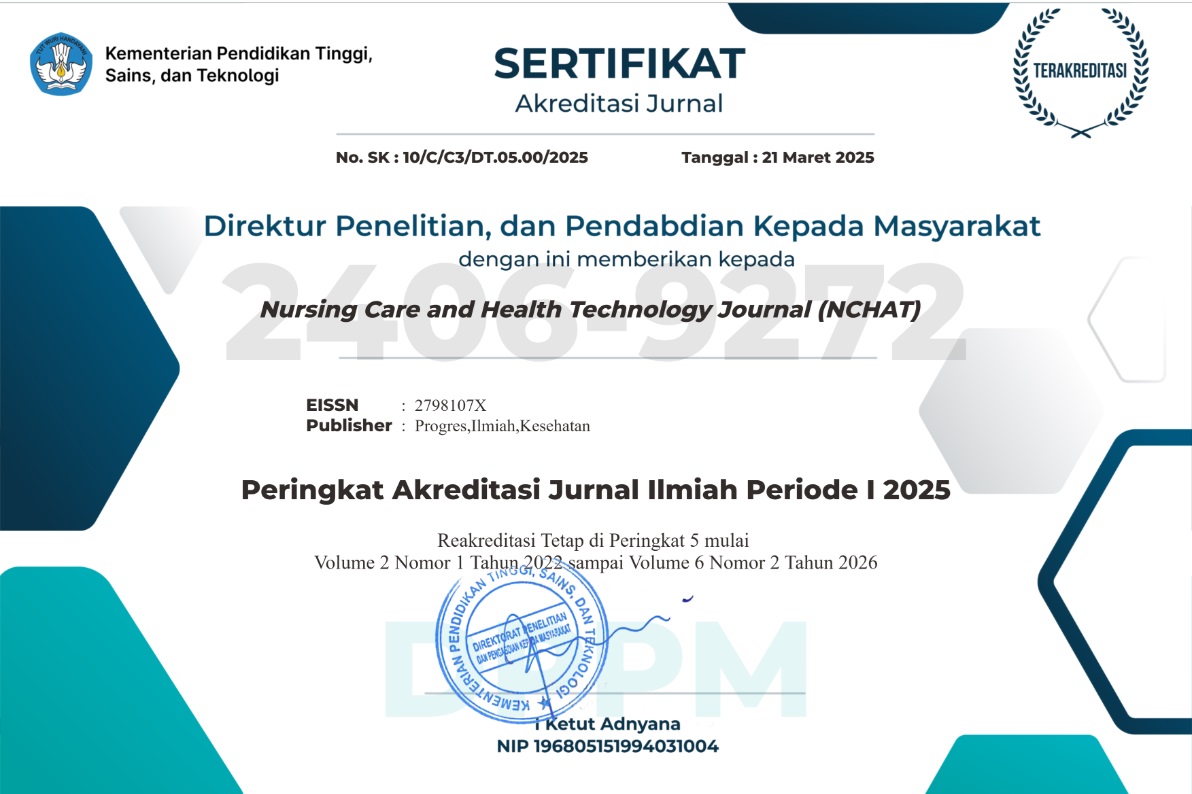Hubungan Energi, Gizi Makro dan Mikro dengan Kebugaran Jasmani Atlet Bola UHO
DOI:
https://doi.org/10.56742/nchat.v5i2.169Keywords:
Asupan Makro, Asupan Mikro, KebugaranAbstract
Asupan zat gizi makro sangat penting untuk kebugaran jasmani, terutama kekuatan otot. Zat gizi makro berfungsi sebagai sumber energi dan mendukung pertumbuhan otot, sementara zat gizi mikro seperti zat besi berperan dalam pembentukan sel darah merah yang mengantarkan nutrisi ke otot. Berdasarkan data Sport Development Index (SDI) tahun 2021, tingkat kebugaran jasmani masyarakat Indonesia berada pada kategori kurang sekali (53.63%), kurang (22.68%), dan hanya 5.86% yang tergolong baik atau unggul. Penelitian ini merupakan penelitian kuantitatif dengan desain analitik observasional menggunakan pendekatan cross sectional. Populasi penelitian adalah seluruh atlet sepak bola Universitas Halu Oleo yang berjumlah 40 orang dan seluruhnya dijadikan sampel melalui teknik total sampling. Instrumen yang digunakan adalah kuesioner, dan analisis data dilakukan dengan uji chi-square menggunakan SPSS. Hasil penelitian menunjukkan adanya hubungan signifikan antara asupan energi (p=0.000), protein (p=0.003), lemak (p=0.001), karbohidrat (p=0.017), dan zat besi (p=0.005) dengan tingkat kebugaran jasmani atlet. Namun, tidak terdapat hubungan signifikan antara asupan vitamin C (p=0.448) dengan kebugaran jasmani atlet sepak bola Universitas Halu Oleo.
References
Makhafola M, Makhubela H, Masoga S, Makuse SH. Fitness soccer athletes training at the University of Limpopo, South Africa: are the macronutrients intake and anthropometric status of these athletes optimal? Int J Environ Res Public Health. 2022;19(19):12650. [View at Publisher] [Google Scholar]
Bergamo RR, Páscoa MA, Hespanhol JE, De Moraes AM, Guerra-Júnior G. Positive association of lean mass and negative association of protein intake on bone mass and bone geometry of adolescent soccer players. Nutrition. 2023;105:111857. [View at Publisher] [Google Scholar]
Macuh M, Levec J, Koji? N, Knap B. Dietary intake, body composition and performance of professional football athletes in Slovenia. Nutrients. 2022;15(1):82. [View at Publisher] [Google Scholar]
Dobrowolski H, Karczemna A, W?odarek D. Nutrition for female soccer players—recommendations. Medicina (B Aires). 2020;56(1):28. [View at Publisher] [Google Scholar]
Istyanto F, Rahmi SA. Manfaat Aktivitas Fisik Terhadap Kesehatan Mental Berbasis Narrative Literature Review. J Kesehat Madani Med. 2023;14(2):182–92. [View at Publisher] [Google Scholar]
Higgins MR, Izadi A, Kaviani M. Antioxidants and exercise performance: with a focus on vitamin E and C supplementation. Int J Environ Res Public Health. 2020;17(22):8452. [View at Publisher] [Google Scholar]
Otocka-Kmiecik A, Król A. The role of vitamin C in two distinct physiological states: Physical activity and sleep. Nutrients. 2020;12(12):3908. [View at Publisher] [Google Scholar]
Yudha Pranata D, Hidayatullah F, Sumartiningsih S, Pramono H, Setiawaty H. Health and fitness study of Semarang soccer players: the role of VO2 max, body mass index, age and length of training. Retos Nuevas Perspect Educ Física, Deport y Recreación. 2024;(61). [View at Publisher] [Google Scholar]
Rodríguez-García L, Moreno-Vecino B, Martín-Moya R, Losa JAM, González-Fernández FT. Relationship between VO2max and anthropometric measures in semiprofessional female soccer players. J Phys Educ Sport. 2024;24(4):950–6. [View at Publisher] [Google Scholar]
Gonzalez MJ, Miranda-Massari JR, Olalde J. Vitamin C and mitochondrial function in health and exercise. In: Molecular nutrition and mitochondria. Elsevier; 2023. p. 225–42. [View at Publisher] [Google Scholar]
Arisanty SJ, Widajati E, Mustafa A, Fitriah AH. Relationship of Energy and Macro Nutrient Intake, Percent Body Fat and Hemoglobin Levels with VO2max of Male Teenage Students Malang City. IEESE Int J Sci Technol. 2024;13(1):1–6. [View at Publisher] [Google Scholar]
Pranata DY, Hidayatullah MF, Sulaiman S, Sumartiningsih S, Pramono H, Setyawati H. Health and fitness study of Semarang soccer players: the role of VO2 max, body mass index, age and length of training. Retos. 2024;61:400–4. [View at Publisher] [Google Scholar]
Setiawan MI, Susanto H, Kartasurya MI. Milk protein consumption improves muscle performance and total antioxidant status in young soccer athletes: a randomized controlled trial. Med J Indones. 2020;29(2):164–71. [View at Publisher] [Google Scholar]
Harfika A, Hidayat F. The Correlation between Nutritional and Hydration Status with Physical Fitness in Young Soccer Athletes. J Appl Food Nutr. 2022;3(2):72–7. [View at Publisher] [Google Scholar]
Noronha DC, Santos MIAF, Santos AA, Corrente LGA, Fernandes RKN, Barreto ACA, et al. Nutrition Knowledge is Correlated with a Better Dietary Intake in Adolescent Soccer Players: A Cross?Sectional Study. J Nutr Metab. 2020;2020(1):3519781. [View at Publisher] [Google Scholar]
Downloads
Published
How to Cite
Issue
Section
License
Copyright (c) 2025 priska oktavia, Waode Salma, Paridah

This work is licensed under a Creative Commons Attribution 4.0 International License.










